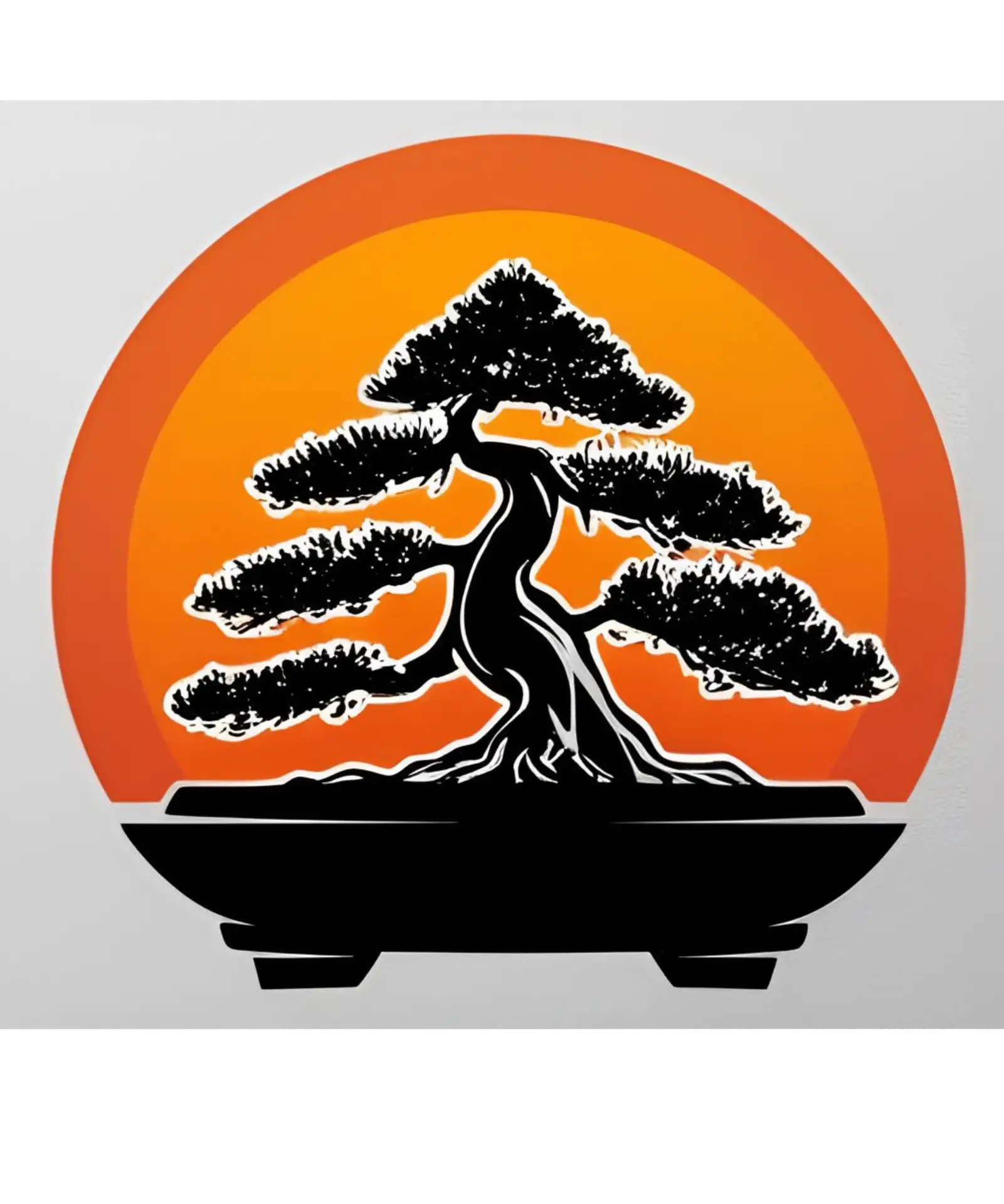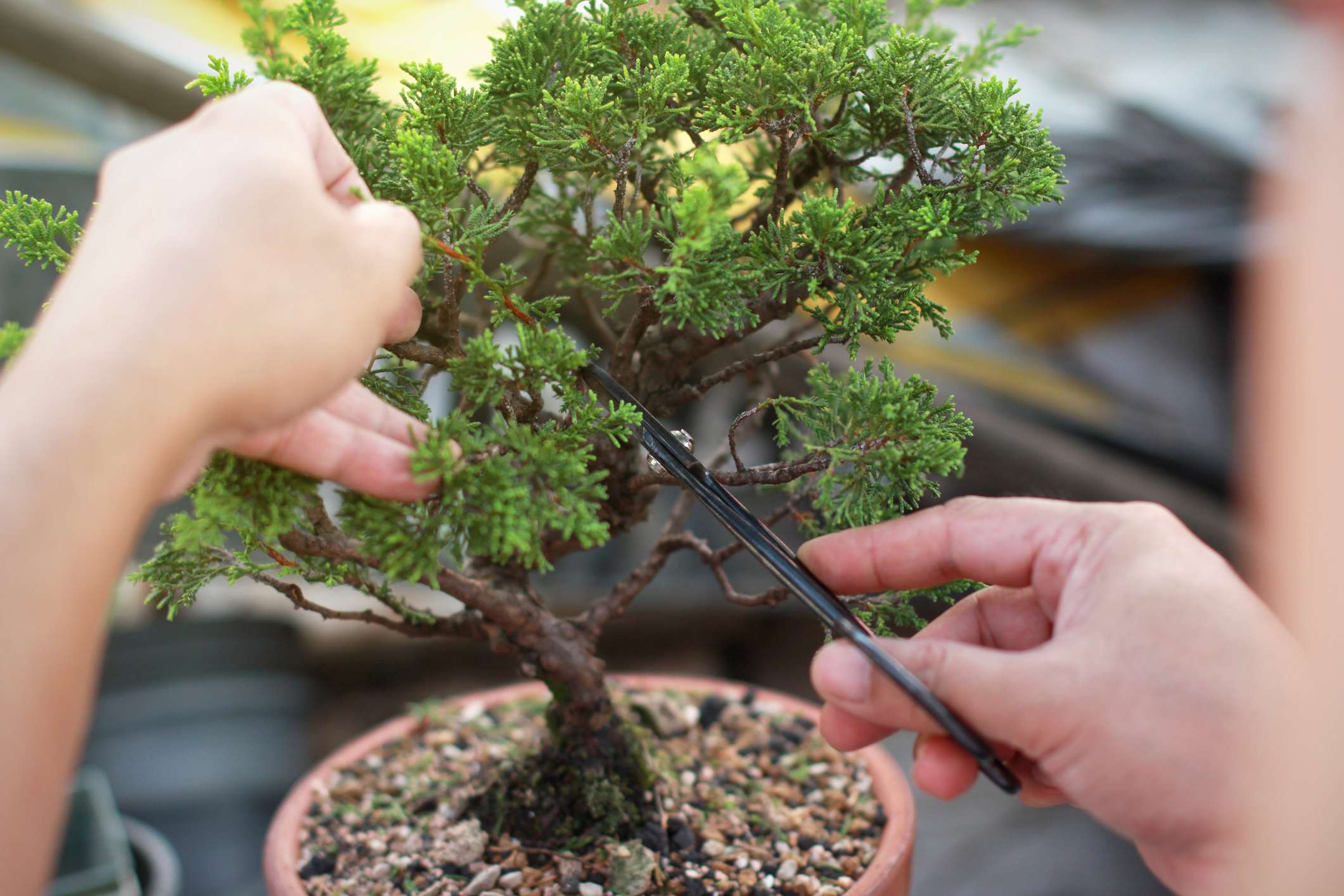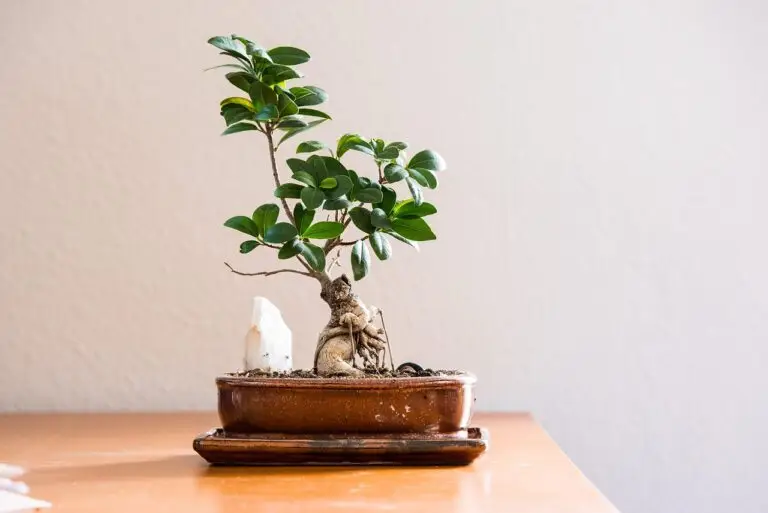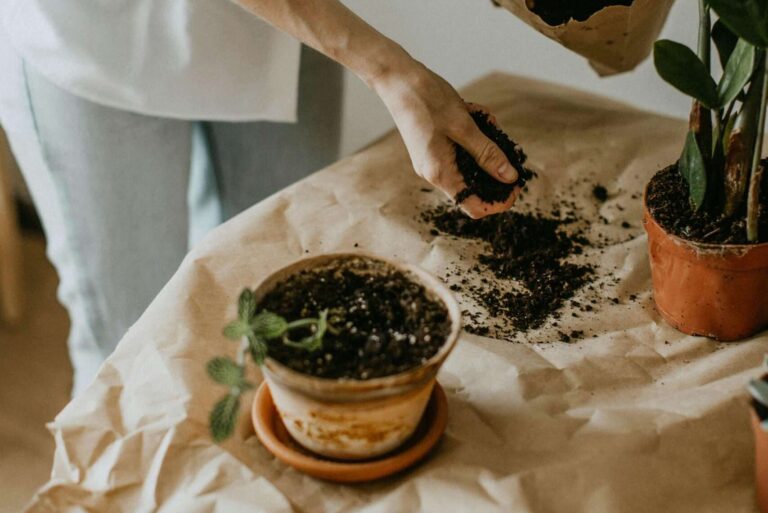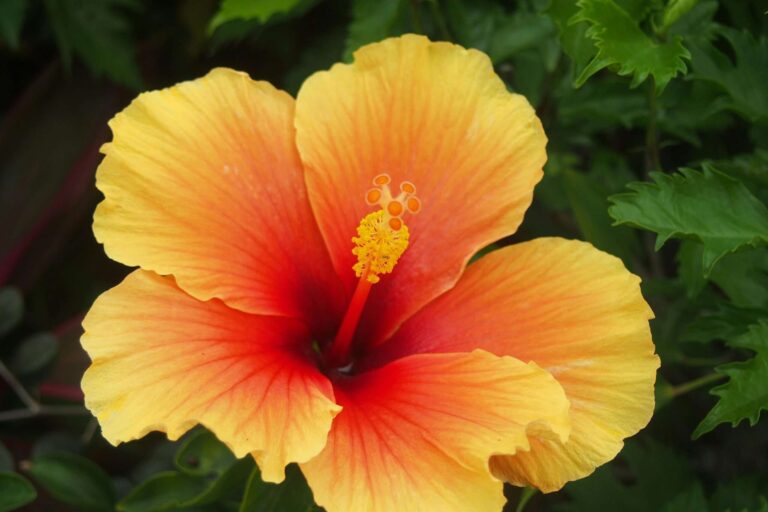Bonsai Tree Care: A Beginners Guide
Ultimate Beginners Bonsai Tree Care Guide by Master Mori.
Long ago, in a quiet village nestled between mountain and mist, I found peace in the art of bonsai. Each tree, though small, held the wisdom of ages — patience, balance, and resilience. To care for a bonsai is not merely to water a plant… it is to nurture harmony itself.
So, young gardener, you ask: “How do I care for a bonsai tree?”
Let us walk this path together.
To master bonsai tree care, one must not only learn technique, but also cultivate awareness. The bonsai is a mirror, reflecting our habits, moods, and intentions. A healthy bonsai means a balanced gardener. And just like life, bonsai care is a dance of consistency and gentle corrections.
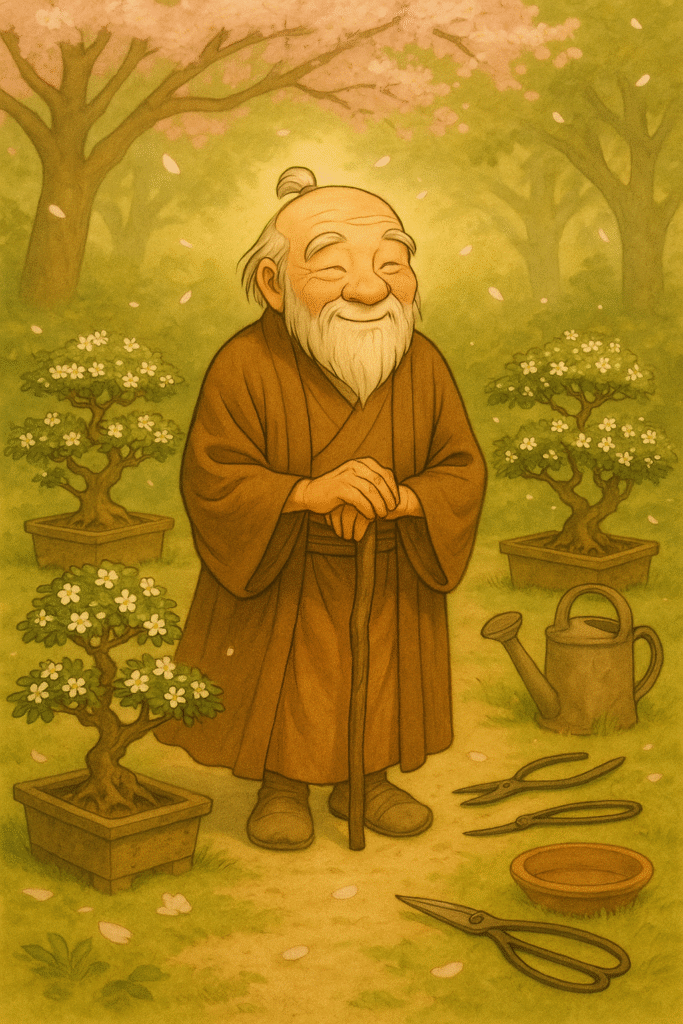
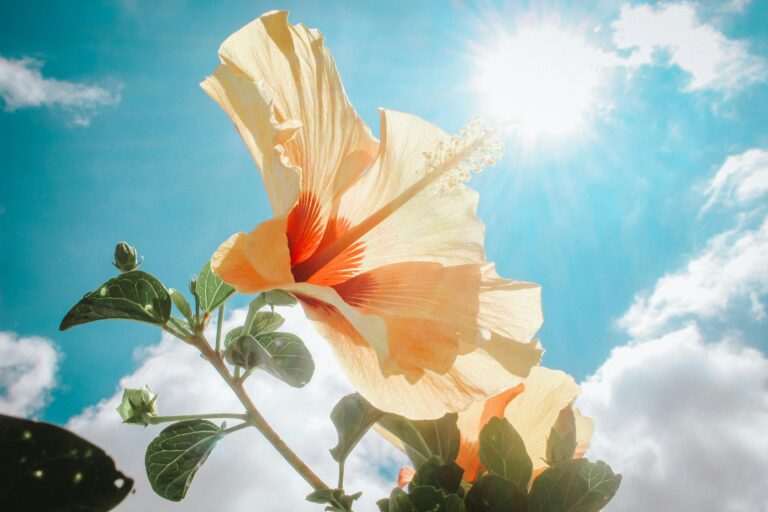
Light – The Breath of Beginners Bonsai Tree Care
“Too much sun and the leaves will burn like a scroll in fire. Too little, and the soul of the tree fades into shadow.”
Most bonsai trees need 5–6 hours of indirect sunlight daily. Indoor species like Ficus and Jade appreciate a bright windowsill. Outdoor species, such as Juniper or Pine, bask in morning light and seek shade in the hottest hours.
The direction of your window matters. South-facing windows in the Northern Hemisphere offer consistent brightness, while east-facing windows give morning light and gentle warmth.
Tip from Master Mori:
“Turn your bonsai a quarter turn each week. A wise tree grows in all directions.”
If you live in a dark home or during winter months, consider a full-spectrum grow light. These mimic the sun’s spectrum and keep your bonsai strong when nature slumbers.
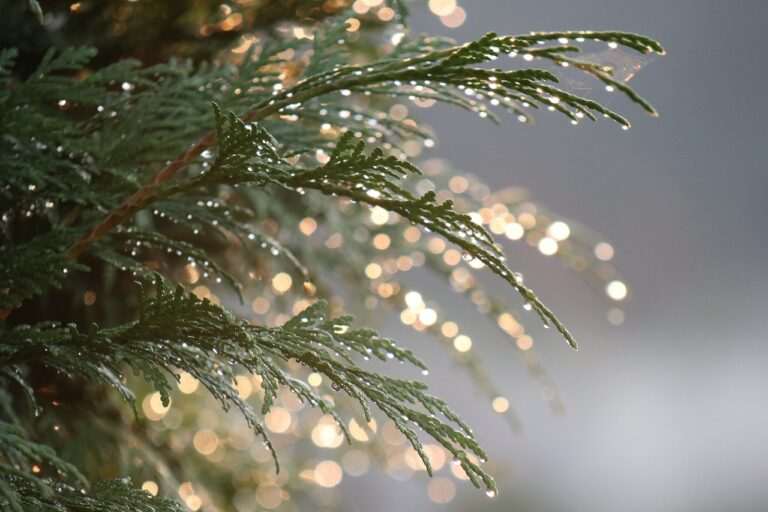
Watering – The Art of Timing
“Overwater, and the roots will drown. Neglect, and the tree cries silently in thirst.”
Watering is the most misunderstood aspect of beginners bonsai tree care. It is not about frequency — it is about awareness.
Use the finger test: Stick your finger about an inch into the soil. If it feels dry, water deeply until it drains from the bottom. If moist, wait. Simple, yet profound.
General Rule:
- In summer: Water once daily or every other day.
- In winter: Water every 3–4 days or as needed.
Warning from Master Mori:
“Do not water on schedule. Water on observation. The tree does not read your calendar!”
Also, use rainwater or filtered water if possible. Tap water, rich in chlorine and minerals, may slowly poison your bonsai over time.
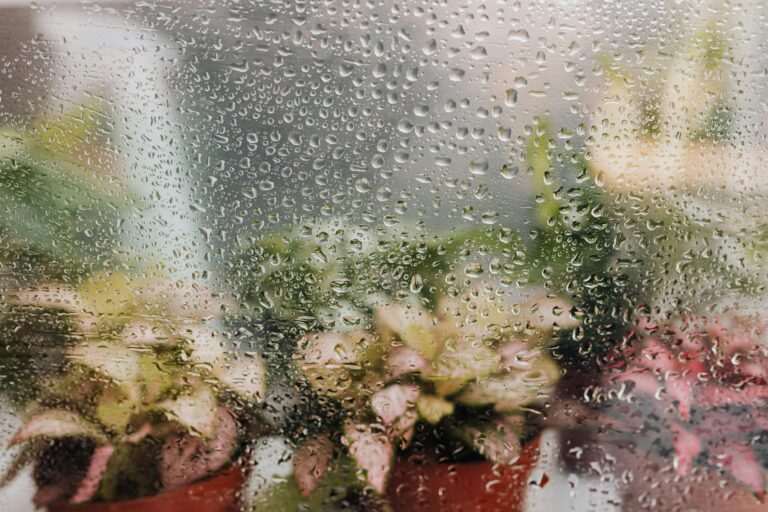
Humidity – The Invisible Ally in Beginners Bonsai Tree Care
“Even a desert tree dreams of dew.”
Most bonsai species come from humid climates. Indoor heating or air conditioning dries the air, stressing your tree.
Solutions:
- Use a humidity tray: Place pebbles in a shallow tray, fill with water, and place the bonsai pot on top (not in the water).
- Mist leaves occasionally, especially for tropical species.
- Group plants together to create a microclimate of moisture.
Bonus bonsai tree care tip: Place a cup of water near your bonsai if you work in a dry room. Silent allies can be the simplest.
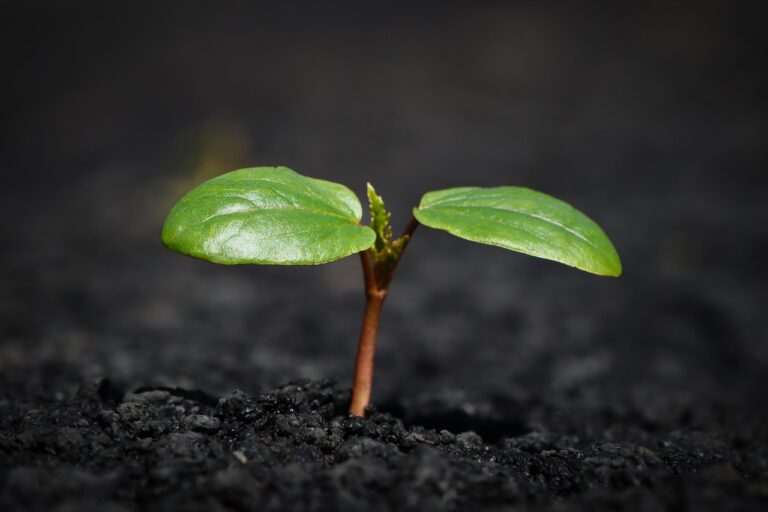
Soil – The Foundation of Life
“Good soil is like a loyal friend — it supports without clinging.”
Standard potting soil is unsuitable for bonsai. It holds water too long, causing rot and suffocation.
Use bonsai-specific soil, which includes:
- Akadama — holds moisture, breaks down slowly.
- Pumice — provides aeration.
- Lava rock — encourages drainage.
For tropical indoor trees, consider mixing in a bit of organic compost. For conifers, go with more inorganic material.
Master Mori’s Blend for Beginners:
- 1 part akadama
- 1 part pumice
- 1 part lava rock
Click Here for
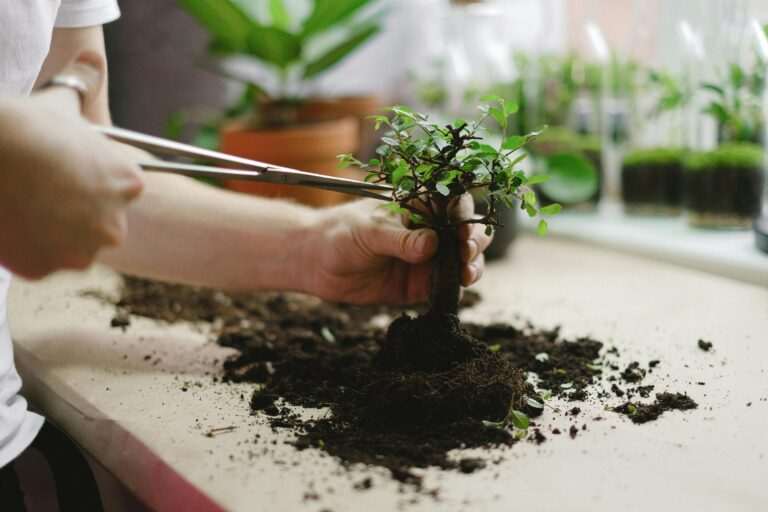
Pruning – The Dance of Form and Flow of Beginners Bonsai Tree Care
“A tree must be shaped, like a warrior with his sword — not too fast, not too fierce.”
Pruning keeps your bonsai small and elegant. It also stimulates back-budding (new shoots closer to the trunk).
Types of Pruning:
- Maintenance Pruning — trim new shoots to maintain shape. This can be done all year round.
- Structural Pruning — done in early spring or after dormancy, to remove thick branches or change the style.
Use sharp bonsai scissors, not your kitchen tools. Always clean blades to avoid infections.
Golden Rule: Prune above a leaf pair or node. New shoots grow from this spot.
And yes, your tree may look bald after a big cut. That is normal. Growth often follows courage.
Click Here for
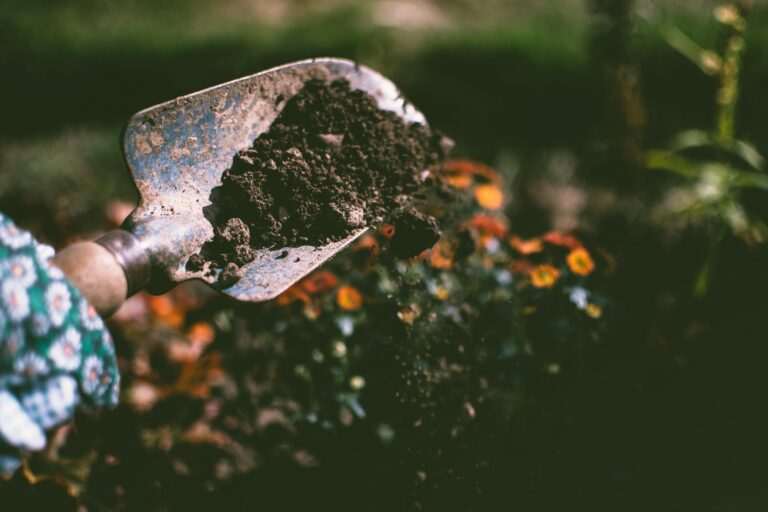
Feeding – A Sip of Strength
“Even the strongest tree needs tea now and then.”
Fertilize during the growing season: spring to early autumn.
Choose a balanced liquid fertilizer (NPK: 10-10-10 or similar). Dilute to half strength to avoid root burn. Organic options like fish emulsion or seaweed extract are also gentle and effective.
Master Mori’s Seasonal Wisdom:
- Spring: High nitrogen to boost growth.
- Summer: Balanced nutrients.
- Autumn: Lower nitrogen, more phosphorus and potassium to prepare for dormancy.
In winter, most trees rest. Let them.
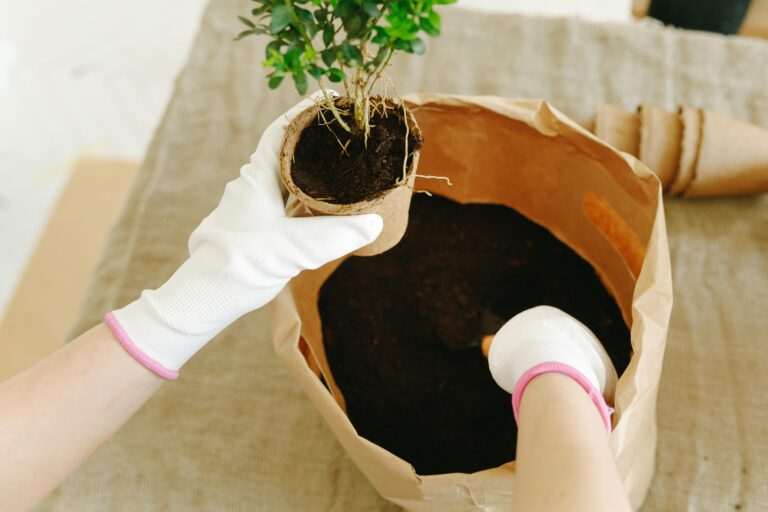
Repotting – Renewal of the Soul
“Even the old tree must change its pot, lest it forget how to grow.”
Repotting removes compacted soil and trims roots. This keeps your bonsai healthy and encourages fine root development.
When to Repot:
- Every 1–3 years for younger trees.
- Every 3–5 years for older, established trees.
Best time? Early spring, when buds begin to swell.
Steps:
- Remove from pot gently.
- Prune 1/3 of the roots, removing circling or dead roots.
- Refresh with new soil.
- Water thoroughly.
Use bonsai wire to anchor the tree in place. It must not wobble — stability is the root of all things.

Pests & Problems – The Tiny Foes of Beginners Bonsai Tree Care
“Aphids, like gossip, spread fast and bring ruin.”
Check regularly for:
- Aphids
- Spider mites
- Scale insects
- Fungal spots
Wipe leaves with a damp cloth. Use neem oil or insecticidal soap if needed. Avoid harsh chemicals — we seek balance, not war.
Yellowing leaves? Could be overwatering. Drooping branches? Maybe under-watering or poor light. Observe, adjust, and learn.
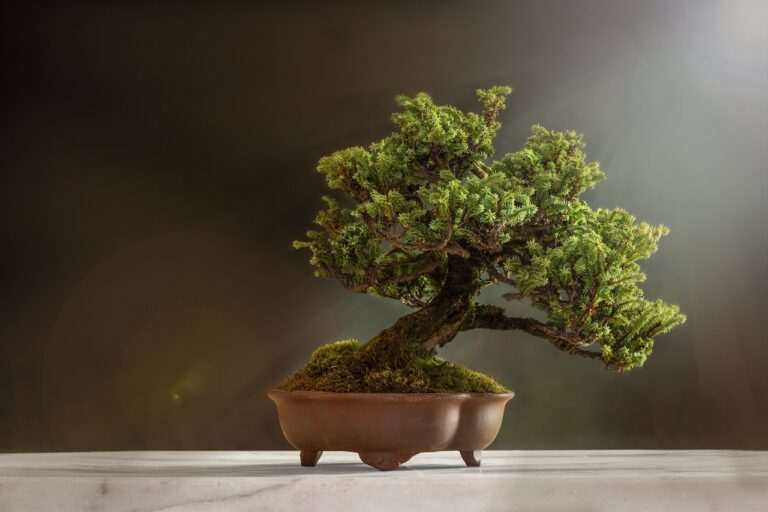
Common Beginners Bonsai Tree Care Mistakes (and the Lessons They Teach)
- Overwatering — most common killer. Trust the soil, not the clock.
- Lack of light — indoor bonsai still need brightness.
- Wrong soil — drainage is everything.
- Neglecting pruning — bonsai is active care, not passive.
- Impatience — trees grow slowly. Breathe. Enjoy.
Master Mori says: “The tree will not grow faster because you stare harder. Brew tea instead.”
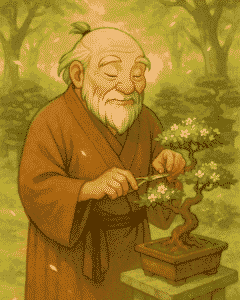
Master Mori’s Closing Words for Beginners Bonsai Tree Care
“You do not own a bonsai tree. You are its guardian, its student, its friend.”
Caring for bonsai is a lifelong path — one of patience, humility, and quiet joy. Do not rush. Observe your tree. Sit beside it. Listen to the lessons it whispers in the breeze.
And if ever you doubt, return to these words. I, Master Mori, will be here — pruning a branch, sipping tea, and smiling beneath the Serissa.
Walk the path of bonsai. 🌿
Recommended Tools for Beginners Bonsai Tree Care
If you’re just getting started, these basics will do:
